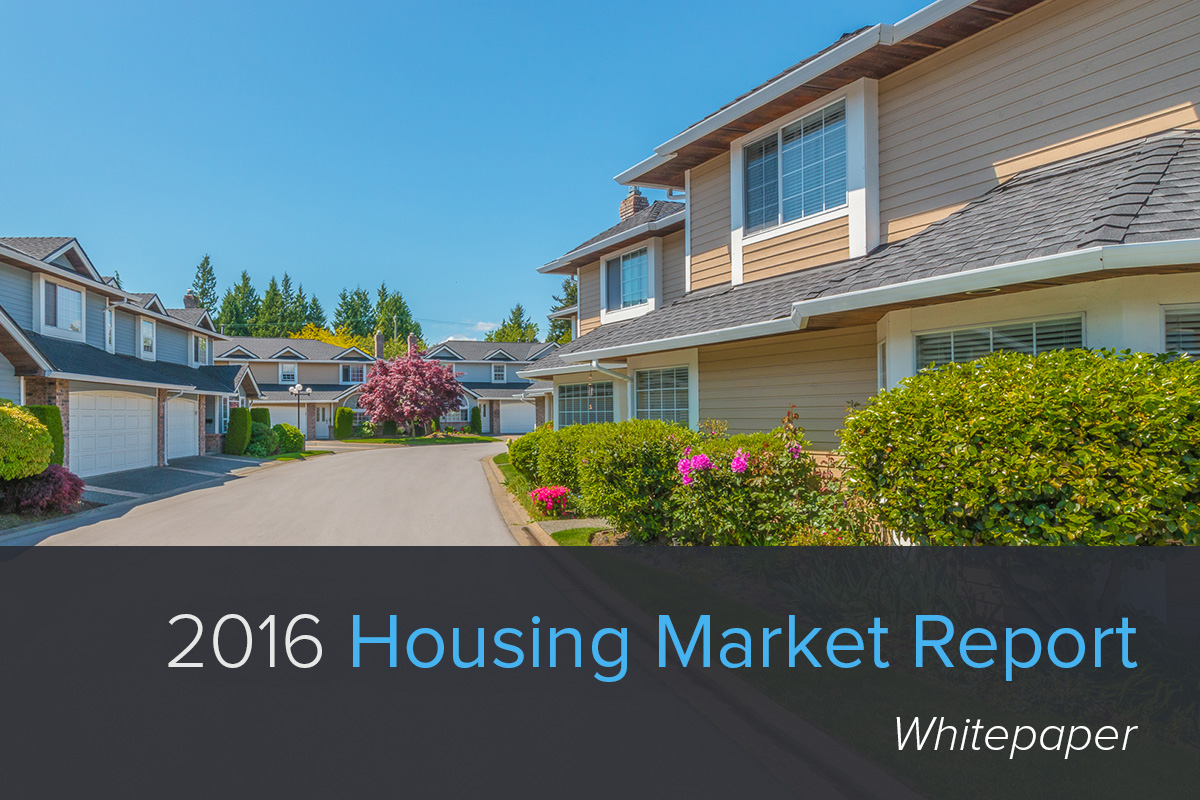2016 Housing Market Report: Key Takeaways

The best in a decade, 2016 existing-home sales were great for home sellers and real estate agents. The year finished with 5.45 million sales, well ahead of 2015 at 5.25 million. Sales did ebb slightly in December because of low supply levels and higher prices. Still, those are the strongest sales numbers since 2006, when 6.48 million homes were sold. It’s very much a seller’s market in most areas of the country, with homes selling in 50 days on average, 53 days for foreclosed homes and 97 days for more complex short sales.
Federal Interest Rates and Lender Issues
Freddie Mac says that the average fixed-rate mortgage was written at 4.20 percent in December 2016, up from 3.77 percent the month before. This is the highest rate we’ve seen since rates of 4.32 percent in April 2014.
Just before leaving office, President Obama lowered the private mortgage insurance (PMI) requirement for Federal Housing Authority (FHA) mortgages to .60 percent, saving the average buyer about $500 per year. However, elections have consequences, and the incoming president swiftly repealed the reduction. This is bad news for buyers because estimates say that higher PMI rate will disqualify many because of debt ratios. Smart agents will keep in touch with prospects via real estate CRM software and teach them about how income increases or additional down payments can help.
Housing Supply and Demand
Overall, the total housing inventory at year’s end stood at 1.65 million existing homes available for sale nationwide. This is actually the lowest level ever recorded by the National Association of Realtors began its tracking of housing supply and demand in 1999. At the pace of current sales, this inventory is a 3.6 month supply, which is 6.3 percent lower than one year ago.
Affordability is another factor to look at. Because housing starts were low again in 2016, affordability is a very pressing concern for buyers. The incoming president is against regulations, which may help builders ramp up production to the levels that are needed. If they get some relief in regulatory burdens, healthy housing start numbers are likely, which would be above 1.5 million homes completed. This would add considerably to the available housing supply and likely reduce pricing on existing homes as well.
Median Prices
The median existing-home price for all housing types in December was $232,200, up 4.0 percent from December 2015 ($223,200). December’s price increase marks the 58th consecutive month of year-over-year gains. Price appreciation is slower in the new year, and home prices are expected to grow at about 3.9 percent, as compared to 4.9 percent in 2016.
Who’s Buying and Who’s Selling?
In December 2016, 32 percent of home sales were those to first-time buyers, and NAR, in its 2016 Profile of Home Buyers and Sellers, reported that 35 percent of homes were sold to first-time buyers in 2016.
Still, those constrained inventory levels mean creeping prices, so it is more challenging than ever to buy a first home. Partially for those reasons, millennials are flocking to “second tier” cities where homes are less expensive and property taxes are lower. Additionally, buying in a smaller city like Durham, NC; Jacksonville, FL; and Colorado Springs, CO, offers potential homebuyers lots of green space, an abundance of new construction, shorter commute times and more of a feeling of community. This is a boon for the areas and real estate agents as well.
Hot, Hot, Hot!
Millennials and baby boomers will both continue to dominate the housing market for the next decade according to the Realtor association. In addition to the second-tier cities like those mentioned above, the Midwest is drawing millennials to places like Madison, WI; Columbus, OH; Omaha, NE; and Des Moines, IA.
Western cities are expected to continue drawing more residents, and will again lead the nation in both sales and prices, increasing by 4.7 percent and 5.8 percent respectively.
Other notable hot housing areas are Dallas-Fort Worth, Denver, Nashville and a trio of Utah cities: Provo, Ogden and Salt Lake City.
One final place that saw tremendous sales activity during the end of 2016: the Washington, D.C. area had more sales than at any time in the past seven years, which could perhaps be another election effect.